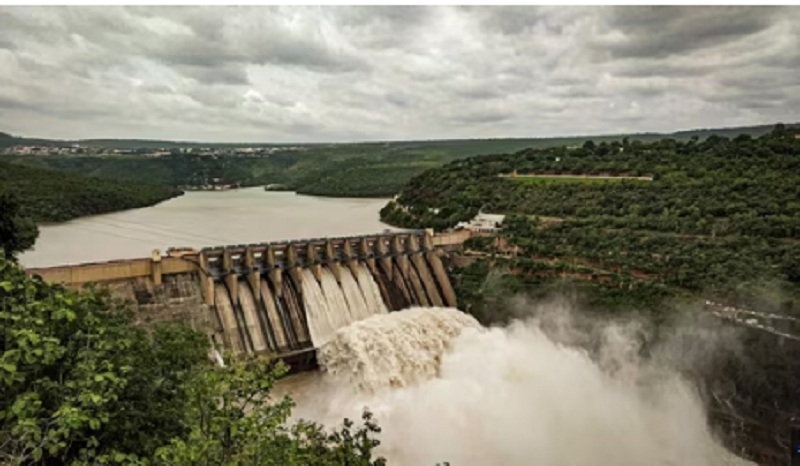China’s construction of a colossal $170 billion hydropower dam on the Brahmaputra River in Tibet represents more than just an engineering marvel—it stands as a stark indictment of Bangladesh’s misplaced diplomatic priorities and naive trust in Beijing. As this mega-dam threatens to devastate Bangladesh’s water security, economy, and environment, Dhaka’s leadership must confront an uncomfortable truth: their extensive courting of China has blinded them to the very real dangers of hydro-hegemony.
The Medog Dam: A Looming Catastrophe for Bangladesh
The scale and implications of China’s Yarlung Tsangpo dam project cannot be overstated. With the capacity to generate 60 gigawatts of power—three times that of the Three Gorges Dam—this infrastructure behemoth will fundamentally alter the hydrology of one of Asia’s most vital waterways. For Bangladesh, a nation where over 160 million people depend on the Brahmaputra (known locally as the Jamuna), the consequences could be catastrophic.
The dam’s strategic location at the Great Bend in Medog County of southeastern Tibet, merely 30 kilometres from the Indian border, allows China unprecedented control over water flows to downstream nations. During dry seasons, China could restrict water flow, leading to severe droughts, increased salinity intrusion in coastal Bangladesh, and the collapse of agricultural systems that feed millions. Conversely, the sudden release of massive water volumes could trigger devastating floods, potentially displacing millions and destroying critical infrastructure.
Perhaps most damaging is the dam’s impact on sediment flow. The nutrient-rich sediments carried by the Brahmaputra are essential for maintaining soil fertility across Bangladesh’s delta region. By blocking these sediments, China’s dam threatens to undermine the very foundation of Bangladesh’s agricultural productivity, potentially reducing rice yields by millions of tons annually.
China’s Track Record: The Mekong River Precedent
Bangladesh’s leaders would be wise to examine China’s behaviour on other transboundary rivers, particularly the Mekong, where Beijing’s upstream dams have caused immense suffering for downstream nations, including Myanmar, Thailand, Laos, Cambodia, and Vietnam. China’s manipulation of Mekong flows has led to severe droughts, collapsed fisheries, and environmental degradation affecting millions. The pattern is clear: China views transboundary rivers as tools of influence rather than shared resources requiring cooperative management.
The lack of transparency surrounding the Brahmaputra project mirrors China’s secretive approach on the Mekong. Despite repeated requests from Bangladesh for detailed environmental impact assessments and hydrological data, Beijing has provided minimal information, citing “sovereignty” over its dam construction in Tibet. This opacity reflects a broader Chinese strategy of fait accompli—build first, negotiate later, if at all.
Bangladesh’s Misguided China Strategy
Bangladesh’s enthusiastic embrace of China’s One Belt One Road (OBOR), now rechristened as Belt and Road Initiative (BRI), has created a dangerous dependency that Beijing now exploits. As the second-largest recipient of Chinese loans under the BRI in South Asia after Pakistan, Bangladesh has committed to $40 billion in Chinese-funded projects. This massive financial exposure gives China significant leverage over Bangladesh’s policy decisions, potentially limiting Dhaka’s ability to protest harmful upstream projects.
The parallels with Sri Lanka’s experience are troubling. Like Colombo before its economic collapse, Dhaka has prioritized short-term infrastructure gains over long-term strategic autonomy. Chinese investments in Bangladesh’s energy and transportation sectors, while providing immediate benefits, have created structural dependencies that Beijing can exploit during disputes.
More fundamentally, Bangladesh’s diplomatic approach has been characterized by a naive belief in Chinese assurances of “win-win cooperation”. Even as China constructs dams that threaten Bangladesh’s water security, Dhaka continues to praise Beijing as a “trusted development partner,” displaying a dangerous disconnect between rhetoric and reality.
India: The Natural Partner Bangladesh Ignores
While Bangladesh lavishes diplomatic attention on China, it has criminally neglected to strengthen cooperation with India—the one nation with both the capacity and incentive to help counter Chinese water dominance. India faces identical threats from China’s upstream dam construction and shares Bangladesh’s interest in maintaining natural river flows. The foundation for robust India-Bangladesh cooperation already exists. Bilateral trade between the two nations reached $14.01 billion in 2022-23, with India serving as Bangladesh’s largest trade partner in South Asia. India has provided over $10 billion in development assistance to Bangladesh, funding critical infrastructure projects including power plants, railways, and connectivity initiatives.
More importantly, India and Bangladesh have successfully resolved complex bilateral issues through dialogue and compromise. The 2015 Land Boundary Agreement, which settled decades-old border disputes, and the delimitation of maritime boundaries demonstrate that both nations can achieve win-win outcomes through patient negotiation. In the water sector specifically, India and Bangladesh have shown the potential for cooperation despite challenges. The 1996 Ganges Water Treaty, while imperfect, provides a framework for managing shared water resources. Both nations have established technical mechanisms for data sharing and dispute resolution, creating institutional foundations that could be expanded to address broader water management challenges.
The Path Forward: Strategic Realignment
Bangladesh must fundamentally recalibrate its foreign policy to address the China challenge. This requires several concrete steps:
First, Bangladesh should immediately demand that China halt dam construction until comprehensive environmental impact assessments are completed and shared with downstream nations. China’s claims that the dam will have “no negative impact” ring hollow, given Beijing’s refusal to provide detailed studies. Bangladesh should make clear that proceeding without proper consultation constitutes an unfriendly act incompatible with the bilateral partnership China claims to value.
Second, Dhaka should work with India to establish a trilateral water-sharing framework that includes China. Rather than accepting Chinese unilateralism, Bangladesh and India should present Beijing with joint demands for transparent water management. The combined diplomatic weight of the two largest downstream nations could compel Chinese engagement in ways that isolated bilateral protests cannot achieve.
Third, Bangladesh should accelerate economic and security cooperation with India to reduce Chinese leverage. This includes fast-tracking the Comprehensive Economic Partnership Agreement negotiations, expanding connectivity projects, and deepening defence ties. Greater integration with India’s $3.7 trillion economy provides Bangladesh with alternatives to Chinese financing and markets.
Fourth, Bangladesh should join India in developing counter-strategies to Chinese dam construction. This could include support for India’s proposed buffer dams on the Siang River, technical cooperation on flood management systems, and joint advocacy in international forums for transboundary water governance.
The Imperative of India Partnership
The harsh reality is that Bangladesh cannot counter Chinese water dominance alone. China’s $17.7 trillion economy and vast infrastructure capabilities dwarf Bangladesh’s resources. Only by partnering with India—a nation with comparable scale and shared interests—can Bangladesh hope to influence Chinese behaviour. India’s own experience with Chinese aggression, from border disputes in Ladakh to dam construction on shared rivers, has produced a more realistic assessment of Beijing’s intentions. Unlike Bangladesh’s naive embrace of Chinese “friendship,” India approaches China with strategic wariness, preparing countermeasures while engaging diplomatically.
This Indian approach offers Bangladesh a model for managing the China relationship. Rather than uncritical acceptance of Chinese projects, Bangladesh should adopt conditional engagement—supporting mutually beneficial cooperation while firmly opposing actions that threaten core national interests. The water crisis represents an opportunity for Bangladesh to demonstrate strategic maturity. By standing firm against Chinese dam construction while deepening cooperation with India, Dhaka can begin to restore the balance in its foreign policy. The alternative—continued acquiescence to Chinese unilateralism—promises only deeper dependence and greater vulnerability.
ALSO READ: Bangladesh: A ‘declaration’ that is an anti-Awami League tract
Conclusion: A Moment of Truth
Bangladesh stands at a crossroads that will define its future for generations. The Chinese dam on the Brahmaputra represents more than an environmental threat—it symbolizes the dangers of misplaced trust and strategic naivety. The solution lies not in confrontation with China, but in strategic rebalancing through a deeper partnership with India. Bangladesh’s leadership must choose: continue the dangerous gamble of trusting Chinese assurances, or embrace the strategic partnership with India that offers the only realistic path to water security and national autonomy. The people of Bangladesh deserve leaders who will make this choice based on hard strategic realities rather than diplomatic pleasantries. Their future depends on it.
















